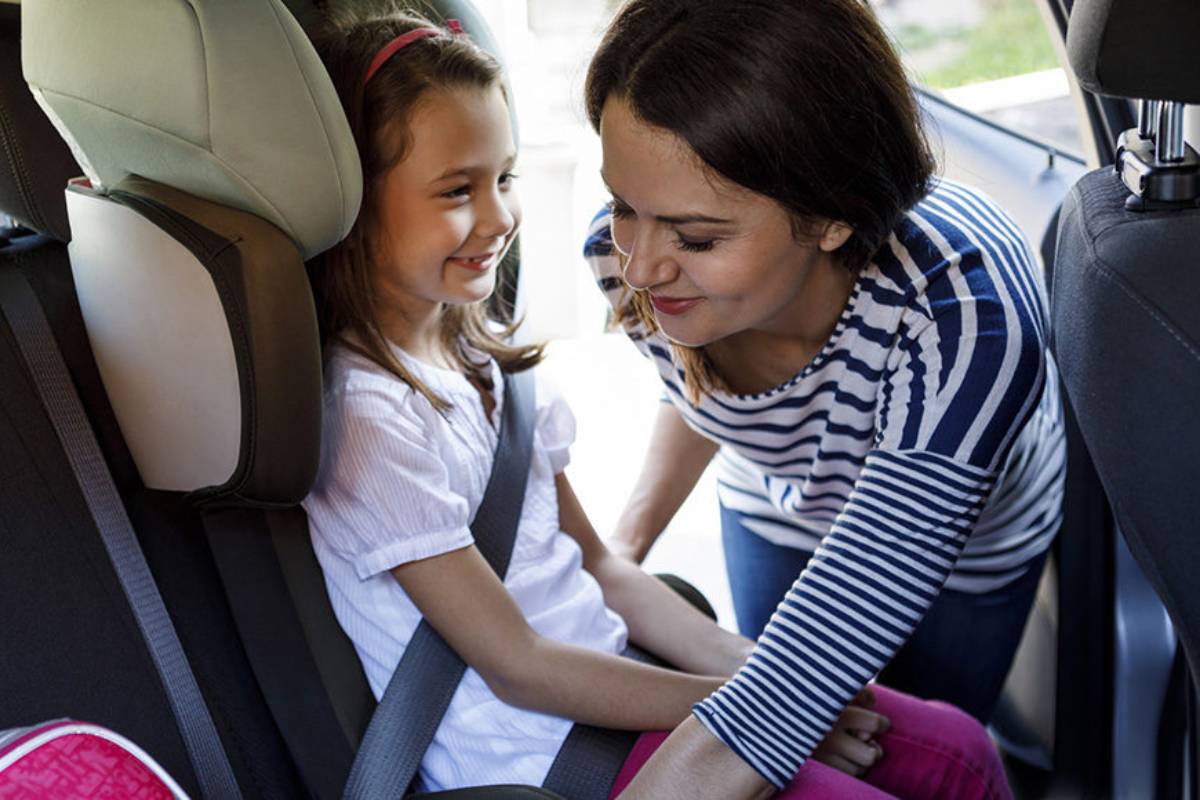
Laws & safety elements surrounding child car seats
In the UK, children will normally have to use a child car seat until they’re either 12 years old or 135 centimetres tall — whichever comes first. With so many drivers having to make use of this equipment then, do you know where to begin when getting to grips with putting a child car seat in your vehicle? If not, don’t panic! Trusted VW dealership Vindis is on hand to tell you everything you need to know about this vital piece of equipment.
The exact law surrounding child car seats in the UK
As we’ve already mentioned, a child will generally have to use a child car seat until they reach their 12th birthday or reach 135 centimeters in height.
Once they have surpassed one of these measures, the child will need to wear a seat belt. If a child under 14 is spotted not wearing a seat belt while someone is driving, the driver can be hit with a fine of up to £500. Furthermore, be aware that it is against the law for more than one person — regardless of their age — to be occupying a single seat that’s fitted with a single seat belt.
Wondering what happens if you’re in a vehicle that doesn’t have seat belts, such as a classic car? For one thing, children under three years old are not allowed to be carried in this type of vehicle. Youngsters over the age of three can be carried though, but only in the back seats. What’s more, all these rules will only be in place for vehicles which were originally made without seat belts.
Even when a child has a disability or a medical condition, the same set of rules outlined above must be adhered too. However, a disabled person’s seat belt or a child restraint that has been designed for a youngster’s needs are allowed to be used. Furthermore, doctors have the authority to issue an exemption certificate that states when a child is unable to use a seat belt or child restraint due to their condition.
After reading these points, do you find that you need to purchase a child car seat? You can choose the equipment based on the height or the weight of your youngster.
What to bear in mind regarding height-based seats
Deemed i-Size seats, height-based child car seats can only be used across the UK if they have been EU-approved. You’ll know if this is the case if there’s a label on the equipment that includes a capital letter ‘E’ within a circle and the text ‘R129’.
It is important that a height-based seat is checked so that it’s suitable for the height of your youngster too, while the equipment must be rear-facing in its setup until the child using it is over 15 months old — once past this age, a forward-facing child car seat can be used if necessary.
What to bear in mind regarding weight-based seats
Just like with height-based child car seats, only weight-based seats which are EU-approved can be used throughout the UK. This time, you can check if this is the case if there’s a label present that comes complete with a capital letter ‘E’ placed in a circle and the text ‘ECE R44’.
Unlike height-based seats though, there’s more than one type of weight-based seat available to be selected between depending on the weight of a youngster. Here’s the five options…
| Weight of the child | Group | Seats available |
| 0-10kg | 0 |
|
| 0-13kg | 0+ |
|
| 9-18kg | 1 |
|
| 15-25kg | 2 |
|
| 22-36kg | 3 |
|
Some additional considerations for finding the right child car seat for you & your youngster
No matter which type of child car seat that you have in mind, it’s worth having a think about how you’ll be using the equipment before making a purchase. A seat that is light in its weight will be a wise choice if you need to regularly lift it in and out of a vehicle, for instance, as will one that has been designed with a base which stays in the car. Will you be participating in quite a few long road trips with your child? If so, then look for a seat that can safely recline so that your youngster can be kept comfortable and more likely to fall asleep while they are travelling from A to B.
Once you reach a store to buy your seat, it’s recommended that you enquire if the shop has a member of staff who is trained in both choosing and fitting child car seats. Unless you are certain that the equipment is suitable for your youngster and will fit into your vehicle, it’s also best to avoid purchasing a child seat over the internet or via mail order.
Why you should avoid buying second-hand child seats
Although they will often be cheaper than brand-new models, it is advised that you refrain from purchasing a second-hand child car seat. There’s a few reasons for this, including the fact that you will not know the history associated with the equipment — it may have suffered from an accident over the years, for instance, even when the damage isn’t visible to the naked eye.
Even without any major damage, second-hand seats will have gone through a bit of wear and tear as well. What’s more, they may not be designed to conform with the safety standards which are currently being enforced.
The instructions might be missing too, which will most likely cause some issues when you’re trying to fit and use the equipment correctly.
Err on the side of caution and treat yourself and your child to a brand-new seat — you needn’t opt for the most expensive model available and you may also be able to take advantage of any child seat discount schemes which are being provided by your local Road Safety Department, which forms a part of your council.
There you have it; everything you need to know for buying a child car seat in the UK. All that’s left to say is for you and your family to enjoy safe travels!
Sources:
https://www.gov.uk/child-car-seats-the-rules
https://www.gov.uk/seat-belts-law
https://www.gov.uk/seat-belts-law/if-your-vehicle-doesnt-have-seat-belts
https://www.childcarseats.org.uk/choosing-using/
https://www.childcarseats.org.uk/choosing-using/choosing-child-car-seats/
https://www.childcarseats.org.uk/choosing-using/second-hand-child-seats/
https://www.childcarseats.org.uk/choosing-using/fitting-child-car-seats/
https://www.childcarseats.org.uk/choosing-using/positioning-child-car-seats-in-cars/

